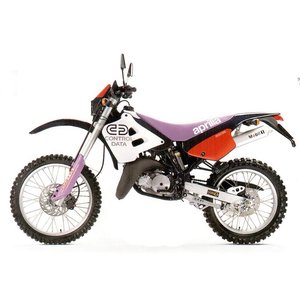Aprilia RX 125 (1990-1997): A Two-Stroke Legend Revisited
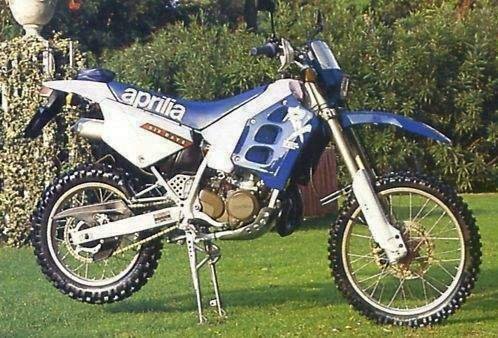
Introduction
The Aprilia RX 125 represents a golden era of lightweight, high-revving two-stroke machines that blurred the line between enduro racing and street-legal thrills. Produced from 1990 to 1997, this Italian-built scrambler wasn’t just a motorcycle—it was a statement of intent. Designed to dominate both dirt trails and winding tarmac, the RX 125 carved its niche with race-bred engineering, aggressive styling, and a howling Rotax engine that still turns heads decades later.
In this review, we’ll explore why the RX 125 remains a cult favorite among riders who crave raw, unfiltered performance. From its liquid-cooled powerplant to its Marzocchi suspension, we’ll break down what made this bike tick—and why it still resonates with enthusiasts today.
Design & Styling: Form Follows Function
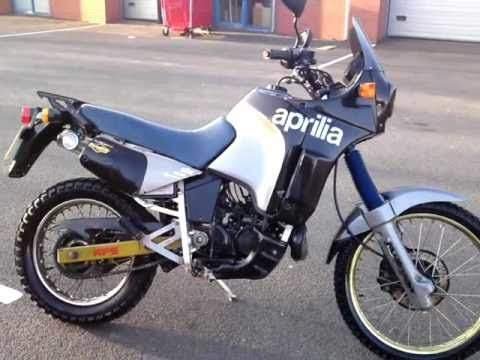
The RX 125’s design screams purpose. The angular fuel tank, slim waistline, and high-mounted fenders give it a rally-bike aesthetic that hasn’t aged a day. Aprilia’s signature red-white-yellow livery (later models adopted bolder graphics) pops against the tubular steel frame, while the upswept exhaust and knobby tires signal its dirt-ready DNA.
Ergonomically, it’s a mixed bag—in the best way. The narrow seat (ideal for sliding backward during hard acceleration) and wide handlebars offer a commanding riding position. At 115 kg (253.5 lbs) for early models, it feels featherlight when maneuvering through tight trails, though the 860 mm seat height might intimidate shorter riders.
Engine & Performance: The Rotax Screamer
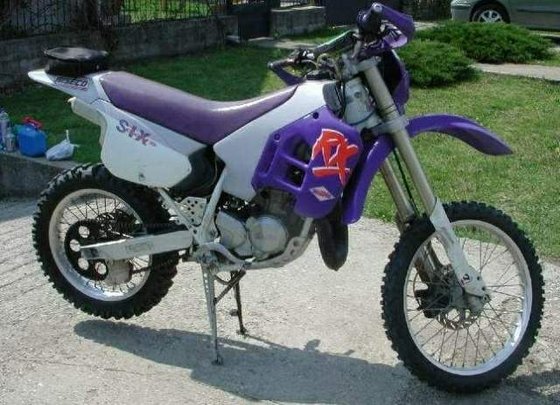
The Heart of the Beast
At its core lies the Rotax 123 engine—a liquid-cooled, single-cylinder two-stroke that evolved across generations. Early models (1990-92) produced 32.4 hp (24.2 kW) at 10,800 rpm, while later variants like the 1992-93 RX 125R pushed this to 34.5 hp (25.7 kW). That’s staggering for a 124.8 cc engine, translating to a power-to-weight ratio that shames many modern 250cc four-strokes.
Riding the Powerband
Twist the throttle, and the RX 125 delivers a classic two-stroke hit—a linear pull until 7,000 rpm, then a violent surge as the powerband kicks in. Keep it singing near its 11,000 rpm redline, and you’ll hit 132 km/h (82 mph)—territory few 125cc bikes of the era could touch. The six-speed gearbox (a rarity in 1990s small-displacement bikes) helps manage the narrow power delivery, though mastering clutchless upshifts becomes an addictive game.
Quirks & Charms
- Fueling: The switch from a VHSB34 carburetor (early models) to a Dell’Orto Ø34 mm (1994 onward) altered midrange response. Purists argue the Dell’Orto sacrifices top-end scream for rideability.
- Starting Ritual: Kickstarting requires finesse—a half-hearted jab won’t do. Later models added electric starters, but the kick lever remains satisfyingly primal.
- Soundtrack: The expansion chamber emits a metallic wail that’s equal parts nostalgic and antisocial.
Handling & Suspension: Born to Rally
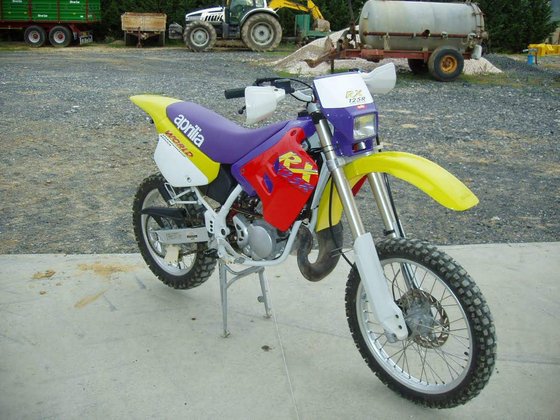
Chassis Dynamics
The RX 125’s steel frame and long-travel suspension (210 mm front/220 mm rear) make it a dirt devil. On loose surfaces, the 21-inch front wheel floats over ruts, while the 18-inch rear (later 19-inch on post-1994 models) hooks up predictably. Switch to pavement, and the chassis feels taut enough for spirited cornering—though the knobby tires protest loudly.
Suspension Breakdown
- Front: Marzocchi USD forks (40 mm) were cutting-edge in the ’90s. They soak up trail trash without wallowing during hard braking.
- Rear: The Aprilia Progressive System (APS) with a fully adjustable Boge Sachs shock allows fine-tuning for rider weight and terrain. Preload adjustments take seconds; rebound damping requires patience.
Braking Performance
Single 250 mm front and 220 mm rear discs provide adequate stopping power, though modern riders might crave more initial bite. Braking distances—14.8 m (48.6 ft) from 60 km/h (37 mph)—are respectable for its era but demand anticipation at highway speeds.
Rider Experience: Living With the RX 125

On the Trail
The RX 125 thrives where roads end. Standing on the pegs, you can flick it through switchbacks or loft the front wheel over logs with a clutch snap. The narrow seat encourages active riding, though all-day adventures demand frequent fuel stops—its 9-11.5 L tank (2.4-3.0 US gal) pairs with thirsty 5.5-6.7 L/100 km (36-42.8 US mpg) consumption.
On the Street
Urban commuting highlights its split personality. The tall gearing (12T-17T front sprockets) keeps the engine relaxed at 80 km/h (50 mph), but vibes through the bars at sustained speeds numb your hands. Still, filtering through traffic is a joy thanks to its slim profile.
Competition: How It Stacks Up
The RX 125 faced fierce rivals in the 125cc enduro segment:
1. Honda CRM125R
- Pros: Honda reliability, broader torque curve.
- Cons: Softer suspension, 8 hp deficit.
- Verdict: Better for trail plodding; the RX dominates in aggression.
2. Yamaha DT125R
- Pros: Iconic design, lower seat height.
- Cons: Air-cooled engine (less peak power), dated drum rear brake.
- Verdict: A commuter-friendly alternative but less race-bred.
3. Suzuki RMX125
- Pros: MotoX-inspired chassis, lighter feel.
- Cons: Narrower powerband, no street-legal variants in some markets.
- Verdict: A dirt-purist’s pick; the RX offers better road manners.
The Aprilia’s trump card? Its suspension and premium components (USD forks, fully adjustable shock) gave it a edge that still shines today.
Maintenance: Keeping the Legend Alive
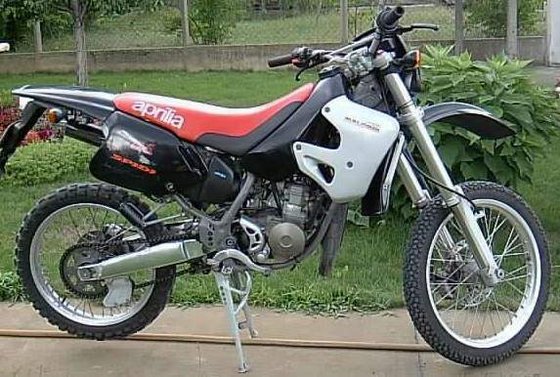
Engine Care
- Top-End Rebuilds: Two-stroke engines demand regular piston/ring replacements—every 3,000-5,000 km (1,864-3,107 mi) for hard riders. Use quality aftermarket kits (MOTOPARTS.store stocks Vertex pistons).
- Cooling System: Flush coolant annually; the Rotax’s liquid cooling is robust but prone to corrosion if neglected.
- Carb Tuning: Jet changes are frequent with altitude/temperature swings. Upgrade to a Mikuni TMX34 (available at MOTOPARTS.store) for crisper throttle response.
Suspension & Frame
- Fork Seals: Marzocchi forks last forever… if seals are replaced at first sign of weeping.
- Swingarm Pivots: Grease every 6 months to prevent seized bearings.
Electrics
- Stator Issues: Early models suffer weak charging systems. A high-output aftermarket stator ensures reliable starts.
- Battery TLC: Later electric-start models need AGM batteries—keep terminals clean.
Brakes & Drivetrain
- Discs: Warping is rare, but sintered pads improve bite.
- Chain: The #520 chain wears quickly. Swap to a DID X-ring chain for longevity.
Conclusion: A Timeless Thrill
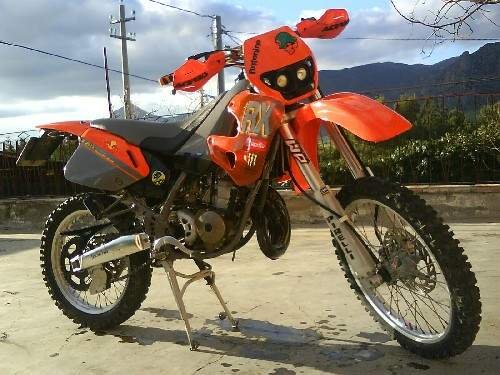
The Aprilia RX 125 isn’t just a relic—it’s a living testament to an era when small-displacement bikes prioritized excitement over emissions. Its razor-sharp handling, addictive power delivery, and rally-inspired design make it a standout in today’s sea of sanitized four-strokes.
For owners, keeping an RX 125 on the road (or trail) is a labor of love. Thankfully, MOTOPARTS.store carries everything from Rotax gasket kits to period-correct decals. Whether you’re restoring a barn find or upgrading your daily rider, this Italian icon rewards those who embrace its fiery spirit.
Rev it hard, ride it harder.
Specifications sheet
| Engine | |
|---|---|
| Stroke: | Two-stroke |
| Max power: | 26 kW | 35.0 hp |
| Max torque: | 22 Nm |
| Fuel system: | VHSB34 LD carburetor (early models); Dell'Orto Ø 34 mm (later models) |
| Max power @: | 10800 rpm |
| Displacement: | 125 ccm |
| Max torque @: | 10500 rpm |
| Configuration: | Single |
| Cooling System: | Liquid cooled |
| Compression ratio: | 12.5:1 |
| Number of cylinders: | 1 |
| Dimensions | |
|---|---|
| Rear tire: | 120/90-18 (1990–1993); 120/80-19 (1994–1997) |
| Dry weight: | 105 |
| Front tire: | 90/90-21 |
| Wet weight: | 122 |
| Fuel tank capacity: | 11.5 L (3.0 US gal) |
| Drivetrain | |
|---|---|
| Chain type: | #520 |
| Final drive: | chain |
| Transmission: | 6-speed |
| Rear sprocket: | 49 |
| Front sprocket: | 12 |
| Maintenance | |
|---|---|
| Engine oil: | 2-stroke oil (premix) |
| Brake fluid: | DOT 4 |
| Spark plugs: | NGK BR9ES (example for 2-stroke engines) |
| Coolant type: | Ethylene glycol-based |
| Performance | |
|---|---|
| Top speed: | 132.2 km/h (82.1 mph) |
| Fuel consumption: | 5.5–6.7 L/100 km |
| Standing ¼ mile: | 14.9–15.2 sec |
| Chassis and Suspension | |
|---|---|
| Rear brakes: | Single 220 mm disc |
| Front brakes: | Single 250 mm disc |
| Rear suspension: | Swingarm with single shock absorber, fully adjustable Boge Sachs unit |
| Front suspension: | Marzocchi upside-down fork |



